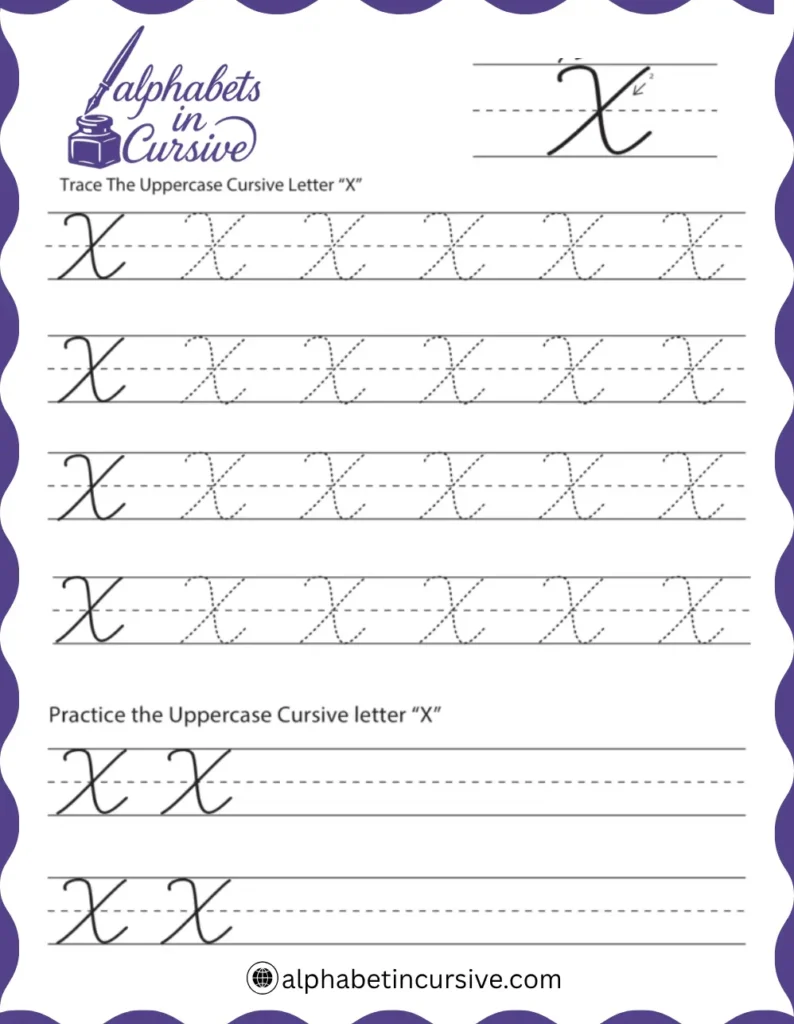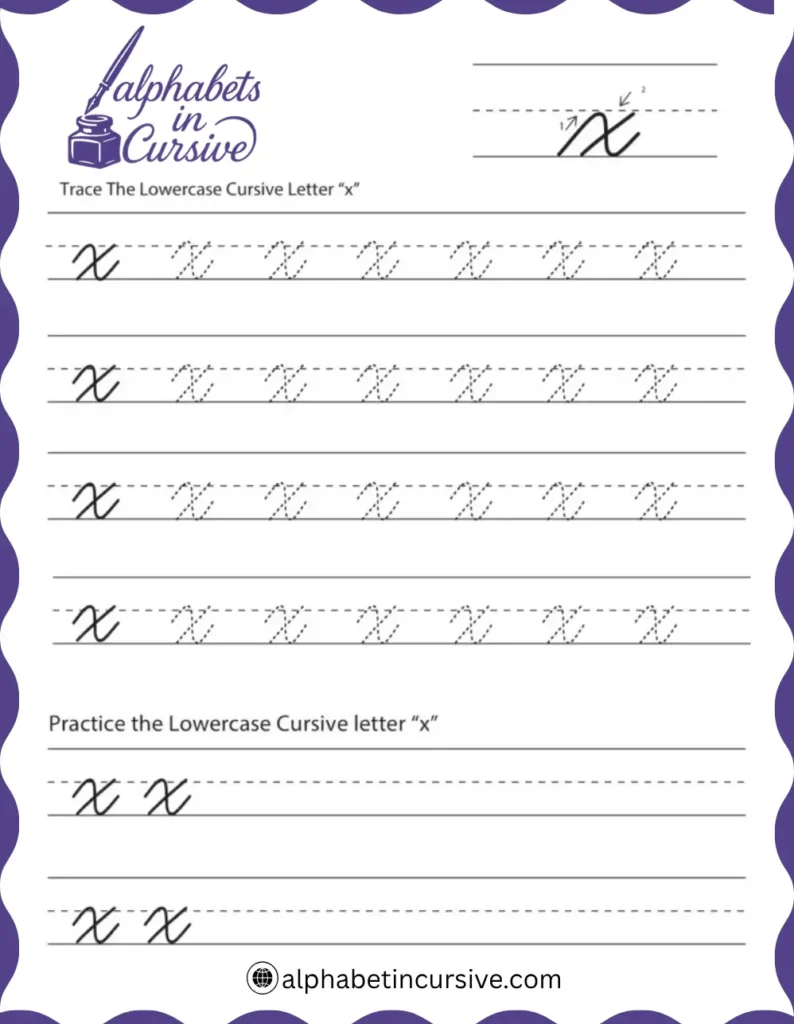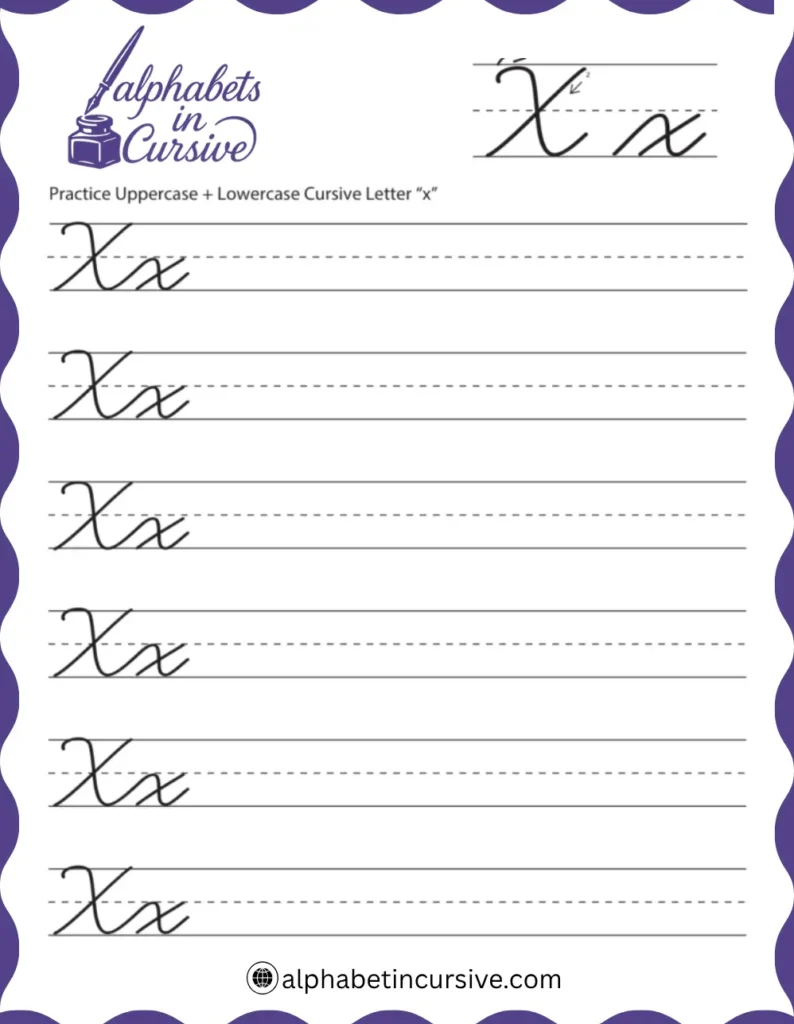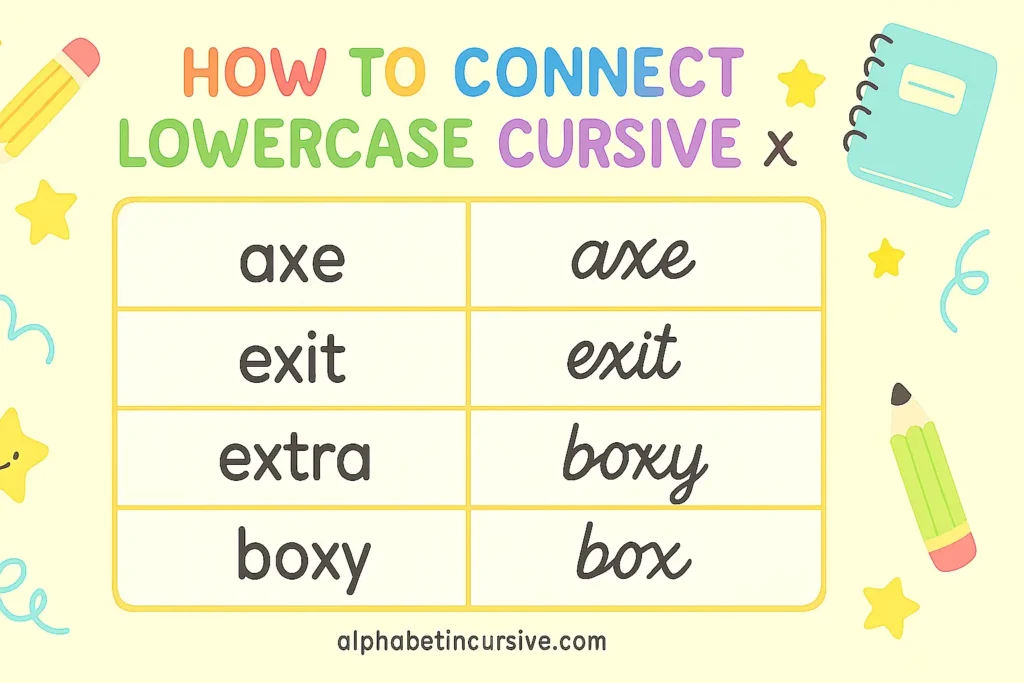Cursive Alphabet: Letter X Worksheet and Practice Methods
Cursive X is one of the trickier letters in cursive writing. It has crossing strokes and doesn’t follow the same flow as other lowercase letters. But with a few simple steps and the right kind of practice, you can write it neatly and connect it clearly.
In this article, you’ll learn how to write both uppercase and lowercase cursive X, connect it with other letters, and follow practice methods that build hand control and consistency. We’ve also added a printable worksheet to help you get started. Let’s begin.
Download Free Printable Cursive X Worksheet
Print the worksheet and start by tracing the strokes slowly. Focus on how the lines cross and where the letter connects. Daily use helps improve your fluency with even the hardest letters.



How to Write the Cursive Letter X
Cursive X looks different from many other letters. It includes a crossing stroke and needs careful spacing to keep it readable and smooth.
How to Write Lowercase Cursive X
Think of lowercase cursive x as a slanted lowercase print x, written in two parts.

- Start at the bottom line
- Slant upward to the midline
- Curve back down to the bottom line — this forms the first stroke
- Lift your pencil
- Return to the midline and draw a slanted stroke down to the left, crossing over the first stroke
- End with a short upward curve if you’re connecting
How to Write Uppercase Cursive X
Uppercase X is less common in cursive words but is often seen in names. Focus on clean, even crossing lines.

- Begin at the top line
- Make a slanted downward stroke to the bottom line
- Curve slightly left as you go
- Lift your pencil
- Start just below the top line again
- Make a second slanted stroke that crosses the first, ending at the bottom right
- Add a small exit stroke if connecting to another letter
How to Connect Cursive X to Other Letters
Because of its crossing strokes, cursive X doesn’t always connect smoothly. In most cases, writers lift their pencil after finishing x and begin the next letter separately. Still, there are ways to connect it neatly with practice.
How to Connect Lowercase Cursive X
If connecting makes your writing messy, it’s okay to lift your pencil. Cursive x is one of the few letters where this is common.

- End the second stroke with a small curve that angles upward
- This curve can lead into the next letter if the spacing allows
- Works best when followed by letters like a, e, o, or i
Examples:
axe, exit, extra, boxy
How to Connect Uppercase Cursive X
Always focus on spacing. Avoid letting the crossed lines bump into the following letter.

- Uppercase X is usually followed by a lowercase letter without a connecting stroke
- If connection is needed, the second slanted line can extend slightly and curve toward the next letter
Examples:
Xavier, Xenia
Practice Methods for Writing Cursive X
Writing cursive X takes focus. The crossing strokes and lifted pencil make it different from most letters. These practice methods help build accuracy and comfort.
Begin with tracing lines
Use lined worksheets to trace both lowercase and uppercase X. Go slow and keep the slants even.
Use dotted examples
Write directly over dotted x forms to learn the proper crossing angle.
Practice short words
Try simple words: box, six, exit, extra. Write them multiple times focusing on neat joins and spacing.
Repeat stroke drills
Practice rows of lowercase x — cross cleanly every time. For uppercase, repeat the full form until both lines are smooth.
Switch between cursive and print
Write the same word in both styles. This builds muscle memory and helps spot any confusion between the two.
Frequently Asked Questions
Why is cursive X so hard to write?
Cursive X uses two separate strokes and often requires lifting the pencil. That makes it feel different from other letters.
What’s the main difference between cursive and print X?
Cursive X is smoother, uses curves instead of sharp angles, and has a flowing style. Print X is made with two straight lines.
What are some good words to practice cursive X?
Try box, fix, extra, exit, fox, and Xavier. These help you practice both lowercase and uppercase usage.
